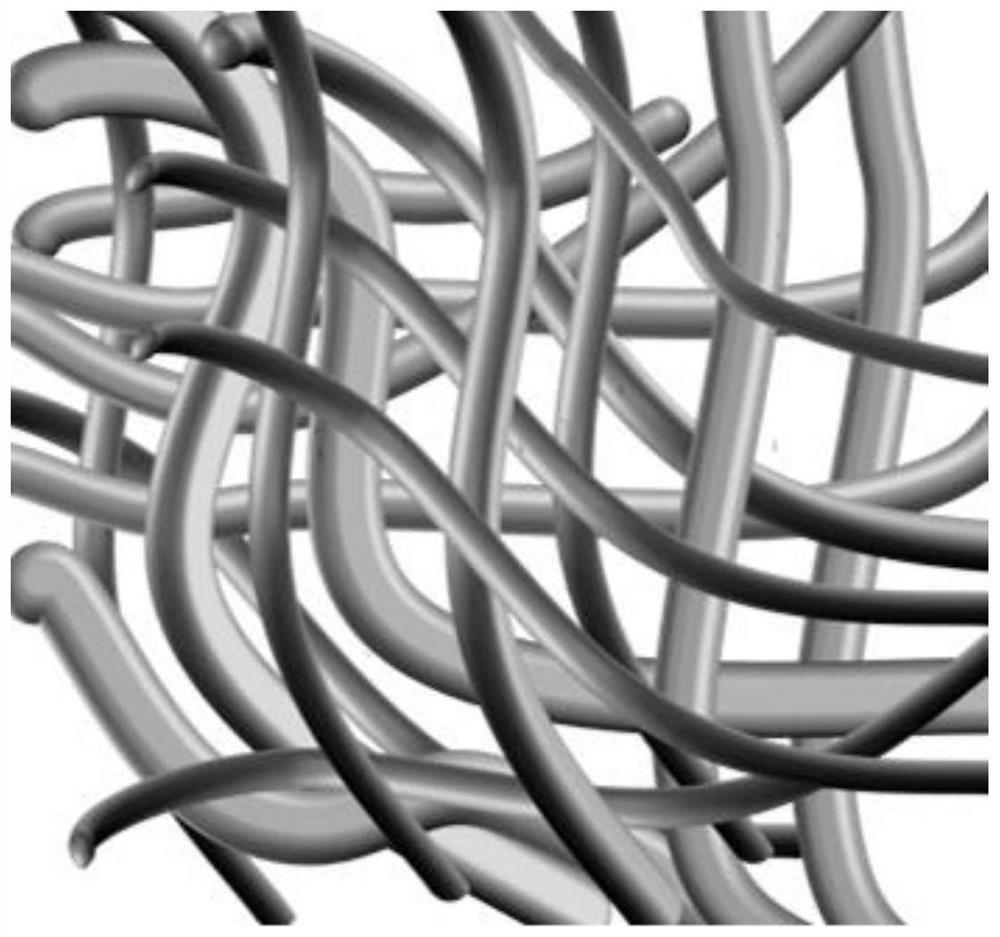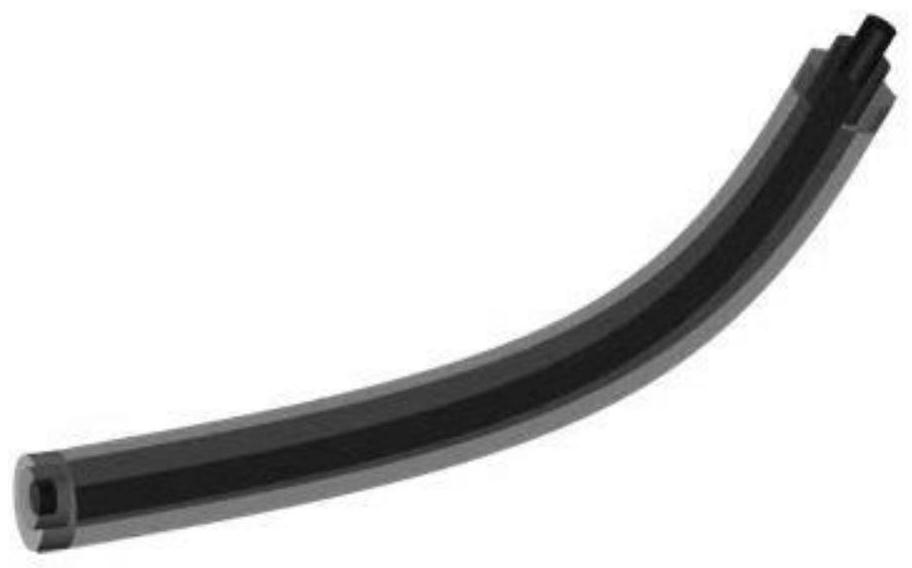A kind of thermal insulation and sound insulation glass microfiber cotton felt for aviation and preparation method thereof
A glass microfiber cotton and glass microfiber technology, which is applied in textiles, papermaking, non-woven fabrics, etc., can solve the problems of thermal insulation and sound insulation performance attenuation, fiber pore structure of aviation glass fiber cotton and uneven bonding system. , to achieve the effect of improving mechanical performance, good anti-virus performance, and improving sound insulation and heat insulation performance
- Summary
- Abstract
- Description
- Claims
- Application Information
AI Technical Summary
Problems solved by technology
Method used
Image
Examples
Embodiment 1-3
[0031] Embodiment 1-3 is implemented according to the following steps:
Embodiment 1
[0033] The molten glass flows into 1 glass with a temperature of 985°C and 440 holes. # The primary glass fiber filaments formed by the alloy bushing plate flow into a temperature of 1010°C1 # The flame blowing furnace head is pulled by secondary melting at high speed under the action of high temperature and high pressure mixed gas to form glass microfibers with a knockdown degree of SR°49. At the same time, the same molten glass flows into 2 glass with a temperature of 975°C and 350 holes # The primary glass fiber filaments formed by the alloy bushing flow into the 2 # The flame blowing furnace head is drawn into glass microfibers with a knockdown degree of SR°34 by secondary melting under the action of high temperature and high pressure mixed gas. At the same time, the same molten glass flows into the 3 # The primary glass fiber filaments formed by alloy bushings flow into 3 at a temperature of 1015°C # The flame blowing furnace head is pulled by secondary melting at hig...
Embodiment 2
[0035] The molten glass flows into 1 glass with a temperature of 990°C and 450 holes. # The primary glass fiber filament formed by the alloy bushing plate flows into a temperature of 1015 ℃ 1 # The flame blowing furnace head is pulled by secondary melting at high speed under the action of high temperature and high pressure mixed gas to form glass microfibers with a knockdown degree of SR°49. At the same time, the same molten glass flows into a 2 # The primary glass fiber filaments formed by alloy bushings flow into 2 at a temperature of 1010°C # The flame blowing furnace head is drawn into glass microfibers with a knockdown degree of SR°34 by secondary melting under the action of high temperature and high pressure mixed gas. At the same time, the same molten glass flows into the 3 # The primary glass fiber filaments formed by the alloy bushing flow into the 3 # The flame blowing furnace head is pulled by secondary melting at high speed under the action of high temperature ...
PUM
| Property | Measurement | Unit |
|---|---|---|
| thermal conductivity | aaaaa | aaaaa |
| thermal conductivity | aaaaa | aaaaa |
| thermal conductivity | aaaaa | aaaaa |
Abstract
Description
Claims
Application Information
 Login to View More
Login to View More - R&D
- Intellectual Property
- Life Sciences
- Materials
- Tech Scout
- Unparalleled Data Quality
- Higher Quality Content
- 60% Fewer Hallucinations
Browse by: Latest US Patents, China's latest patents, Technical Efficacy Thesaurus, Application Domain, Technology Topic, Popular Technical Reports.
© 2025 PatSnap. All rights reserved.Legal|Privacy policy|Modern Slavery Act Transparency Statement|Sitemap|About US| Contact US: help@patsnap.com


